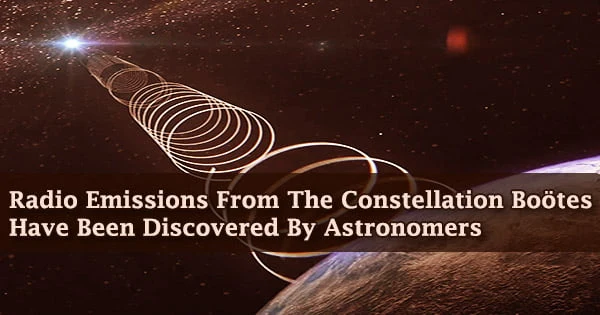An international team of scientists has identified radio bursts emerging from the constellation Boötes, which could be the first radio emission recorded from a planet beyond our solar system, using a radio telescope array to monitor the sky.
The team, which includes Cornell postdoctoral researcher Jake D. Turner, Philippe Zarka of the Observatoire de Paris Paris Sciences et Lettres University, and Jean-Mathias Griessmeier of the Université d’Orléans, will publish their findings on Dec. 16 in the Astronomy & Astrophysics research section.
“We present one of the first hints of detecting an exoplanet in the radio realm,” Turner said. “The signal is from the Tau Boötes system, which contains a binary star and an exoplanet. We make the case for an emission by the planet itself. From the strength and polarization of the radio signal and the planet’s magnetic field, it is compatible with theoretical predictions.”
Turner’s postdoctoral advisor Ray Jayawardhana, the Harold Tanner Dean of the College of Arts and Sciences and an astronomy professor, is one of the co-authors.
“If confirmed through follow-up observations,” Jayawardhana said, “this radio detection opens up a new window on exoplanets, giving us a novel way to examine alien worlds that are tens of light-years away.”
Turner and his colleagues discovered emission bursts from a star-system housing a so-called hot Jupiter, a gaseous giant planet that is very near to its own sun, using the Low-Frequency Array (LOFAR), a radio telescope in the Netherlands.
Other probable exoplanetary radio-emission possibilities were discovered in the 55 Cancri (Cancer constellation) and Upsilon Andromedae systems. Only the Tau Boötes exoplanet system, located 51 light-years away, had a detectable radio signature, providing a unique view into the planet’s magnetic field.
According to Turner, a member of Cornell’s Carl Sagan Institute, observing an exoplanet’s magnetic field aids astronomers in deciphering a planet’s interior and atmospheric features, as well as the mechanics of star-planet interactions.
The signal is from the Tau Boötes system, which contains a binary star and an exoplanet. We make the case for an emission by the planet itself. From the strength and polarization of the radio signal and the planet’s magnetic field, it is compatible with theoretical predictions.
Jake D. Turner
The planet’s magnetic field shields it from the solar wind, keeping it livable. “The magnetic field of Earth-like exoplanets may contribute to their possible habitability,” Turner said, “by shielding their own atmospheres from solar wind and cosmic rays, and protecting the planet from atmospheric loss.”
Turner and his colleagues studied Jupiter’s radio emission profile two years ago, scaling it down to resemble the characteristics of a distant Jupiter-like exoplanet. These findings were used to create a template for looking for radio emission from exoplanets 40 to 100 light-years distant.
The researchers were able to locate the expected hot Jupiter signature in Tau Boötes after combing over over 100 hours of radio observations. “We learned from our own Jupiter what this kind of detection looks like. We went searching for it and we found it,” Turner said.
The signature, though, is weak. “There remains some uncertainty that the detected radio signal is from the planet. The need for follow-up observations is critical,” he said.
Turner and his team have already started a campaign to follow up on the signal from Tau Boötes using numerous radio telescopes.
In addition to Turner, Jayawardhana, Griessmeier, and Zarka, the co-authors are Laurent Lamy and Baptiste Cecconi of the Observatoire de Paris, France; Joseph Lazio from NASA’s Jet Propulsion Laboratory; J. Emilio Enriquez and Imke de Pater from the University of California, Berkeley; Julien N. Girard from Rhodes University, Grahamstown, South Africa; and Jonathan D. Nichols from the University of Leicester, United Kingdom.
The National Science Foundation provided money to Turner, who set the framework for this research while pursuing his doctorate at the University of Virginia.





